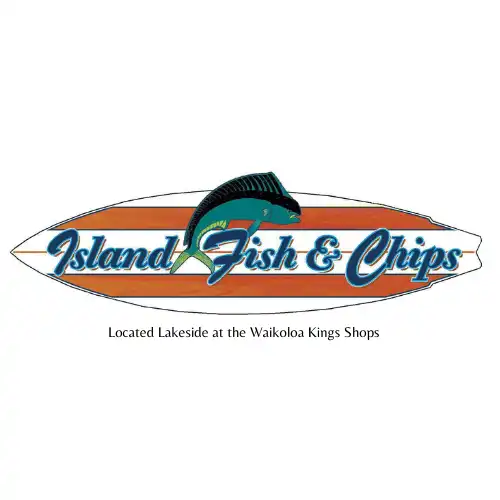Hawai‘i’s newly named state plant kalo to represent island agriculture in Washington
It took years, but the most important food crop in Hawai‘i finally became its official plant.
The Hawai‘i Legislature in 2007 passed an act to establish kalo as the official plant of the islands because of its cultural significance. The law did not take effect, however, until Jan. 1 this year, some 18 years later.

Kalo is now set to star in a business showcase for national leaders this June in Washington.
“We’re promoting it as the Hawai‘i state plant,” said Hawai‘i Department of Agriculture Chairperson Sharon Hurd.
The annual Hawai‘i on the Hill event introduces federal leaders and policymakers to island industries, including agriculture. It features a “Taste of Hawai‘i” day, during which kalo will take center stage this year.
“It gives us a chance to promote the cultural aspects of it,” said Hurd. “We’re going full-on kalo.”
Colocasia esculenta, commonly known as taro, is an herbaceous perennial with a starchy corm and nutritious heart-shaped leaves. It is one of about 23 “canoe plants” brought to the Hawaiian Islands sometime between 1000 and 1200 C.E. by Polynesian voyagers.
Kalo must be prepared and cooked well to prevent itchiness in the mouth and throat. Poi, a dish of cooked and mashed corms thinned with water, has been ubiquitous for centuries in Hawai‘i.
The plant is also used in kūlolo, a pudding made with coconut cream, and its greens are served in laulau. Many restaurants serve kalo chips and taro burgers are now found on menus throughout the islands.
Nonprofit Mālama Kaua‘i last year developed kalo french fries.
While their crops remain popular, kalo farmers face challenges such as access to land and infrastructure, as well as invasive species. These include apple snails, coqui frogs and little fire ants.
“Our biggest worry, right now, is that it’s going to impact farmers’ willingness to farm,” said Haylin Chock, outreach specialist with the Kaua‘i Invasive Species Committee.
Some kalo farms in Hawai‘i are overrun by coqui frogs. The amphibians were introduced sometime in the late 1980s and have no natural predators or competitors to keep their populations in check.
Little fire ants, which deliver stings that remain painful for weeks, fall from trees in infested areas and float in loʻi, the irrigated terraces used for kalo cultivation, and swimming holes. Apple snails — known vectors of parasitic worms — eat kalo corms and shoots.
The state Agricultural Development Division’s most recently published kalo statistics said 438 acres throughout Hawai‘i were dedicated to kalo farming in 2021. That’s about 4% of the 1.05 million acres of farmland in the state, according to agricultural data collected in 2022.
An article also published in 2021 described Hanalei on the North Shore of Kaua‘i as the islands’ kalo capital, with farms that produce more than two-thirds of all the kalo in Hawai‘i.
Waipiʻo Valley on the Hāmākua Coast of the Big Island also is known for kalo and poi production, with its agricultural capacity defining it as one of the most bountiful spots in the state.
The valley has been distinguished as one of the most outstanding wetland taro valleys in Hawaiʻi, and Waipiʻo’s resources sustained the people of the Big Island and Maui during a 13th century drought.
Waipiʻo Valley Taro Products, established in 1981, specializes in producing and selling taro-based products, using traditional methods and kalo grown in the valley. The Honokaʻa-based small business offers a variety of traditional Hawaiian taro items, including poi, taro chips and taro flour.
The Big Island can also claim being home of the world’s heaviest taro.
South Kona farmer Clarence Medeiros Jr. and his grandson Lincoln Medeiros unearthed almost 3 years ago the most colossal kalo corm either of them — and the rest of the world — have ever seen.

The 50-pounder they harvested on Presidents’ Day, Feb. 21, 2022, was later certified by the Guinness Book of World Records as the official heaviest taro on the planet, a record that still stands.
The king-sized corm put to shame the previous world record holder, a 7-pound corm harvested in 2009 in China. The average size of a taro plant depends on the variety, but the U.S. Department of Agriculture says they usually weigh in at 1 to 2 pounds.
Medeiros’ entire world record plant — which included the leaves, corm, stalk and eight keiki ot 8 to 12 pounds each — was at least 11 feet tall, from the top of its leaves to the bottom of the corm, and weighed more than 100 pounds.
It could have fed about 180 people and made just shy of 15 pounds of average store-bought poi.
“When we went home and put it on our scale and it came out at 50, we’re looking at each other like, whoa,” said Medeiros’ wife Nellie in October 2023 after the world record was official.
Clarence Medeiros’ family has grown kalo in South Kona for generations. He started helping his grandparents and parents when he was about 6 years old, as soon as he could put on his own rubber boots.
The Native Hawaiian farmer now in his mid-70s has operated his own farm for more than 50 years, and he also was already teaching the art of kalo growing to his own grandchildren before the gigantic kalo plant was even planted.
Chock explained the profound cultural significance of kalo in Hawai‘i.
Hāloa was the first-born son of the sky father Wākea and the earth mother Papahānaumoku, through Wākea’s relationship with their daughter, Hoʻohokukalani.
“Wākea has a child with her, and that is Hāloa,” Chock said. “But that child is stillborn, so they they plant him into the earth, and then the first kalo plant grows.”
A second, healthy child was born. He became the ancestor of the Hawaiian people.
The story teaches Hawaiians how to interact with their environment, according to Chock: “Hāloa is our older brother and feeds us, and in turn, we take care of Hāloa.”
At the time of Europeans’ arrival, more than 300 varieties of kalo might have existed in the Hawaiian Islands, according to the 2007 state plant act. Approximately 87 of these varieties are still recognized today.

Many can be found at the Limahuli Garden and Preserve on the North Shore of Kaua‘i.
“Our kalo has come from all over Hawai‘i,” said Randy Umetsu, a horticulturalist at Limahuli. “We have the short and stocky to the tall and long, to the narrow leaf, to the wider, rounder leaf.”
The 1,000-acre site is one of five gardens tended by the nonprofit National Tropical Botanical Garden in Hawai‘i and Florida. Limahuli also preserves and propagates 72 kalo cultivars, 70 of which are Hawaiian.
A kalo cultivar is a plant known only in cultivation. To persist, it must be continually and intentionally propagated.
Kalo cultivars originate when a plant with a rare genetic mutation appears. This results in a plant with distinct traits affecting its color, shape, size, taste, texture or suitable growing conditions.
Farmers who find those traits desirable can grow genetic clones of the original plant using huli: smaller tubers that grow off corms used as propagative material.
The 70 cultivars at Limahuli, sourced from throughout Hawai‘i, can trace their ancestry directly to the canoe plants brought ashore by the first Polynesians to settle the islands.
“Between cultivars, there’s a huge spectrum,” said Umetsu, who credits Jerry Konanui, a kalo farmer who died in 2017, with the revitalization of Hawaiian cultivars.
“Kalo is what makes Hawaiʻi, Hawaiʻi,” Umetsu added. “To actually see that flourish, where it’s on everybody’s table all the time, would be one of my hopes and dreams.”
Editor’s Note: Reporter Scott Yunker works on a casual basis as a gardener in the horticulture department of the National Tropical Botanical Garden.

Sponsored Content
Comments








